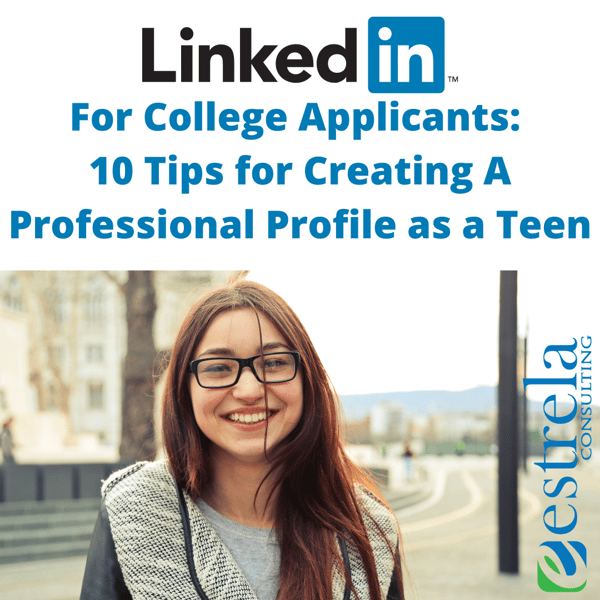
At the dinner party of social media sites, LinkedIn may not be as eye-catching as Instagram or as entertaining as TikTok, but what it lacks in charm, LinkedIn more than makes up for with its forward thinking and resourcefulness. As the most popular platform for professional and career networking, LinkedIn offers an abundance of resources for those wanting to engage in career development. And while the site may seem primarily geared towards adults already established in the workforce, the LinkedIn community has plenty to offer college-bound teens as well.
As a college-bound teen, establishing a LinkedIn profile is an excellent way to add to your positive Internet presence and a great method for connecting with professionals who are in your field of interest or individuals associated with colleges at the top of your list. The biggest difference in how you’ll engage with LinkedIn versus an adult is that your profile will focus less on what you’ve already done and more on what you plan to do. So get ready to put on your big kid pants (AKA business suit), because here are ten tips to help you establish your LinkedIn profile:
- To save time, consider creating your profile the same time you fill out your activities section on your college applications. This will not only be efficient but will also encourage you to curate a consistent message to the world regarding your interests and aspirations.
- When you first create your account, one of the initial screens will ask for your most recent job title. Instead of writing something here, select “I’m a Student.” This is important, because now the questions that follow will be relevant for a student user.
- The next screen is sometimes a little tricky for high school students, because it’s directed more towards college students. All fields are required, so it’s important you know how to answer each question. It will first ask for your “School or College/University.” This is where you will write the name of your high school. For Degree, you’ll state, “High School Diploma,” and Specialization is where you’ll indicate if your diploma has a unique designation such as “Honors Diploma” or “International Baccalaureate.” If your diploma does not have any particular designation, then simply write “General Studies.”
- Your profile photo doesn’t need to be fancy. Just make certain that it’s recent, clearly shows your face, and is taken in front of a plain background. Also, try to wear a shirt that is professional looking and be sure to smile!
- Once you’ve answered the initial questions, you’ll be directed to the LinkedIn home screen and news feed. It will seem like your profile is complete and you are finished; however, there is still a lot more to include! Navigate over to Me and click on View Profile. You’ll now have the option to add additional sections to your profile. The more sections you add, the stronger your profile will be.
- For your Headline (think: tagline), write a quick phrase describing what you are interested in studying or what currently excites you. For example, “Aspiring Nurse” or “Lover of all Things Culinary.” The Headline is located directly underneath your name, so it will be one of the first things someone sees when they search your name or view your invitation to connect. The Summary section is like an expanded version of your Headline. Here is where you can share a summary of your interests, skills, and plans for the future. It doesn’t need to be more than a few sentences long.
- Work Experience is where you’ll list any paid positions that you’ve held. If you’ve not had any paid experiences, simply do not add this section to your profile. The section will be omitted, and Education will be featured at the top of your profile instead.
- Other profile sections to consider adding include Volunteer Experience, Skills, Courses, Projects, Honors & Awards, and Organizations. Organizations is where you will write about your participation in extracurricular activities that you haven’t already mentioned elsewhere.
- Once you’ve created your profile, ask a parent or other adult to take a look before inviting anyone to connect. Ask them to give you feedback through the eyes of a college official or future employer in addition to traditional proofreading.
- After everything’s ready to go, start searching for people to connect with. Begin with family, friends, and teachers. Once you’ve developed a foundation, expand your requests to people who work within your field of interest or who are connected with colleges you are interested in attending.
Bonus tip: Your entire social media presence (not just your LinkedIn profile) should present you in a positive light. While it’s not likely that admissions officers will look you up on Instagram, there have been past instances where admissions offers have been revoked after things students posted on social media made their way to their prospective colleges. Just remember that when you share, you’re doing just that. Share with the world things that highlight the kind and respectful human you are, and you’ll be just fine.


